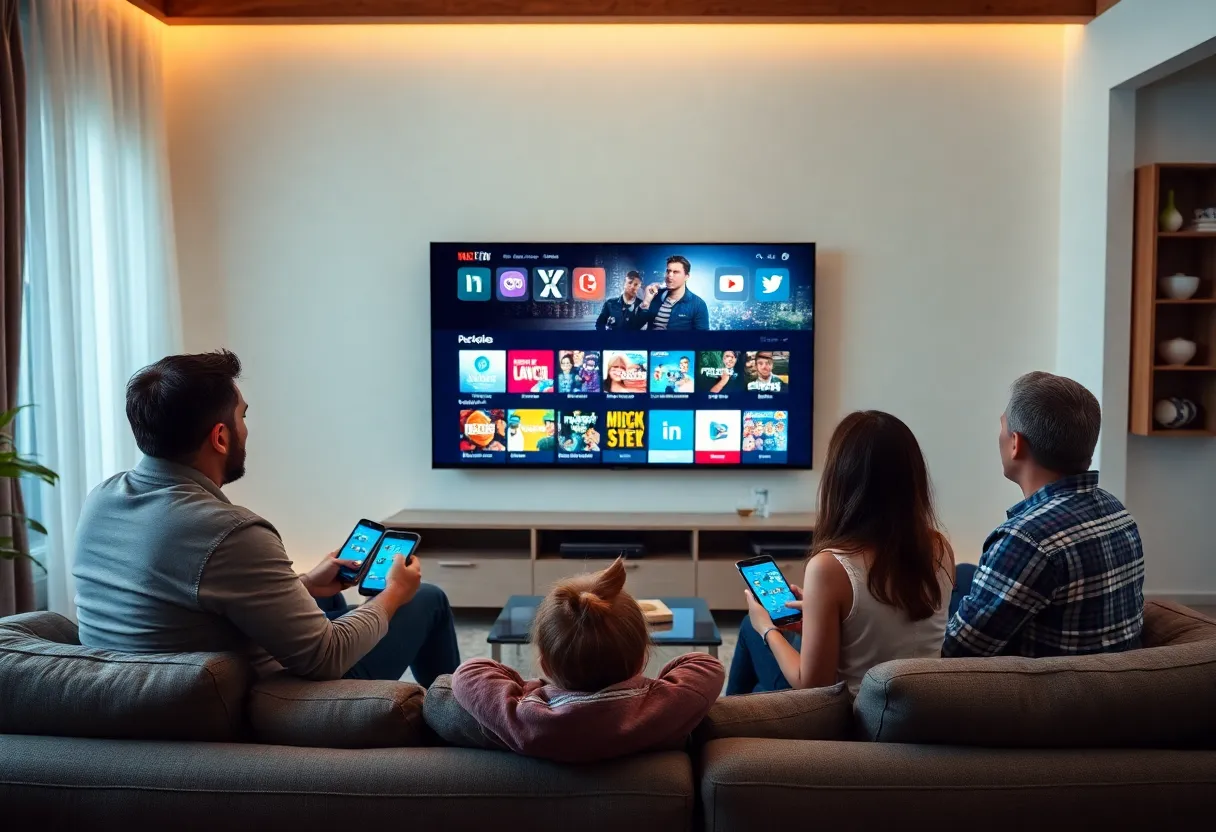

The rise of streaming services is reshaping how media is consumed in households.
Article Sponsored by:
Real Internet Sales is a digital marketing agency located in Columbia, South Carolina. We specialize in website design and development, SEO, social media management, online advertising, AI integration, and workflow automation. Our services also include affiliate marketing and digital strategy.
Real Internet Sales also offer specialized programming for real estate firms, using IDX and RETS feeds to automatically populate MLS properties on their websites for improved property listings and sales. We also work with clients in the restaurant, tourism, and e-commerce industries to enhance their digital presence and streamline operations.
The media consumption landscape is rapidly transforming as consumers allocate their time differently between traditional media and social platforms. With the rise of ad-supported streaming services and a decline in pay TV subscriptions, younger generations are leading the shift towards more affordable and relatable content options. Companies are now competing for advertising dollars as traditional media struggles to adapt to these changes.
In today’s digital world, the way we consume media and entertainment is evolving rapidly. Recent trends show that consumers spend an astonishing six hours daily immersed in various forms of media. Yet experts believe this time is unlikely to increase further. Instead, we are witnessing a shift in how that time is allocated, particularly between traditional media and social platforms.
With so many viewers absorbed in media content, companies are vying for their attention and, more importantly, their advertising dollars. A massive half of all advertising spending in the U.S. is currently up for grabs as it shifts toward social video platforms. These platforms have gained traction thanks to their rich array of free content and cutting-edge advertising technologies, effectively luring audiences away from traditional studios. Traditional media organizations are feeling the heat as consumers favor catching up on popular shows or videos on social media over cable channels.
A striking trend worth noting is the decline of pay TV subscriptions, which have dropped from 63% to 49% in just a few years. Younger consumers, particularly those in Generation Z and Millennials, are leading the charge. About 23% of Generation Z and 18% of Millennials are planning to cut their cable subscriptions in favor of more affordable streaming video on demand (SVOD) services in the next year. This shift is largely driven by the rising costs associated with traditional cable.
The current median household income in the U.S. stands at around $80,000. In a world where prices continue to rise, consumers are becoming more discerning, prioritizing essential spending over discretionary media subscriptions like cable television. As cable services face this landscape, the average utility cost for cable is around $125 per month, while four paid streaming services combined typically run about $69.
Interestingly, research indicates that a growing percentage of consumers — about 41% — feel that the content value on SVOD platforms isn’t worth the price they pay, a rise of five percentage points from last year. This sentiment is driving what’s known as subscription churn rates, which remain high at 39%. In simple terms, many subscribers frequently cancel and re-subscribe to services, reflecting their struggle to find value in current offerings.
To stay competitive, streaming services are exploring a variety of ad-supported tier options to draw in subscribers who are wary about spending too much. Research shows that more than half of SVOD subscribers have shifted towards these ad-supported plans, which has increased by eight percentage points compared to the previous year. This shift may signal a new avenue for studios to engage viewers while keeping costs manageable.
A big player in this shift is social media, which is rapidly changing how younger generations view media. Many Generation Z and Millennials find social media ads to be more relevant than traditional media ads. Their consumption of content on social platforms is increasingly perceived as more relatable compared to traditional genres like films and television. In fact, many consumers report that they receive better recommendations for media content through social platforms than they do through their SVOD services.
As the competitive landscape continues to evolve, traditional media companies are grappling with rising production costs and an urgent need to innovate against more agile social platforms. The stage is set for an exciting future where media consumption norms are torn asunder, making way for a new era driven by accessibility and consumer preferences.
It’s clear that as we look ahead, the media landscape will continue to shift dramatically—with streaming services and social platforms leading the charge. The battle for attention, relevance, and viewer loyalty is just beginning!
Global Avocado Exports Decline Amid Holiday Shipping Woes
How Can You Use Mobile-First Marketing Strategies to Boost Your Digital Presence?

7001 St Andrews Rd #329 ,
Columbia, SC 29212,
United States
Phone: (+1) 803 708 5514
News Summary Xavier Becerra, former U.S. Secretary of Health and Human Services, has declared his…
News Summary The Supreme Court is considering a pivotal case regarding South Carolina's decision to…
News Summary The FDA faces significant backlash after laying off senior veterinarians amid a bird…
News Summary The U.S. government has admitted to erroneously deporting Kilmar Abrego Garcia, a Maryland…
News Summary A drastic tornado outbreak has caused widespread chaos across the South and Midwest,…
News Summary Newberry County is currently on high alert as local authorities search for Landon…